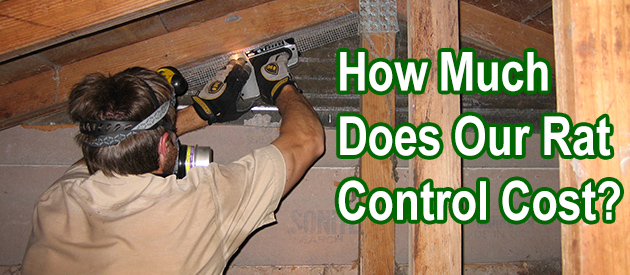Monterey County, Salinas Rat Control Situation:
Roof rats in apartment walls - Hi! I saw your page and hope this is still a valid email. I live in an apartment and do not have rats inside yet but do have them in my walls. The property manager called pest control who put traps with peanut butter on the roof but that is it! I called the county complaint line but they said it will be 7-10 days til they can come. What else can I do or get the manager to do? The noise is becoming more frequent and in more walls. I asked them to cut into walls but they won't yet. Thanks, Lindsay
Hello David, I have visited your site after searching for an answer to my problems. I think I have a rat living in my ceiling. Its driving me crazy, it makes so much noise especially in the evenings and it even wakes me up in the middle of the night. I live in a council flat on the top floor and the rat lives in the attic. The problem is that there is no human access to the attic at all, I have called the council and they said as there's no acces to the attic they cannot do anything. Only if the rat comes into the flat. It's outrageous! I stood outside one day and have noticed that on the top of the roof there is a very small gap, which I don't know what it's for but I think the rat is using this passage to come in or out, or perhaps the pipes. Anyway, how can I get rid of it without being able to put any poison or traps in the attic? Please help! Thanks you, Adriana
Salinas Rat Control Tip of The Week
Will Rats Come Out When It's Light?
Rats are living beings with a negative phototropism. Daylight often affects them, leading them to be most active when it's dark out. Most rodents are characterized by going out during evenings when there is dim light or at night.
This habit of being active at night is very useful when combined with the instinct of going unnoticed. Rats that live in underground places like sewers can suffer retinal damage when they surface in broad daylight. The discomfort to their vision does not allow them to carry out the necessary daily survival activities.
Light is an abiotic environmental factor that can have a major impact on animal behavior and physiology. Rats adapt better to darkness because it can be very comfortable. It is believed that rats have dichromatic color vision and light is often a very important environmental signal for regulating circadian cycles and reproduction cycles.
Fear Of Light Or Fear Of Death?
Rats are one of the most successful invasive species in the world, they can adapt to almost any environment. These animals perceive light as dangerous. The light rays can make rodents feel somewhat exposed to predators or even vulnerable to people who will want to exterminate them no matter what it costs.
A Messy And Damp Place Is Ideal
Abandoned buildings, homes with cracks in the walls, or sewers, often have an abundance of dark places. A home with little light is ideal for living; it is perfect for rats to make their nests without having to expose their small offspring to being eaten by other animals.
Professional exterminators often use this information about the light phobia of rats in their preventive or extermination plans. The ultimate goal is to prevent these rodents from making their dens in or near people's homes.


